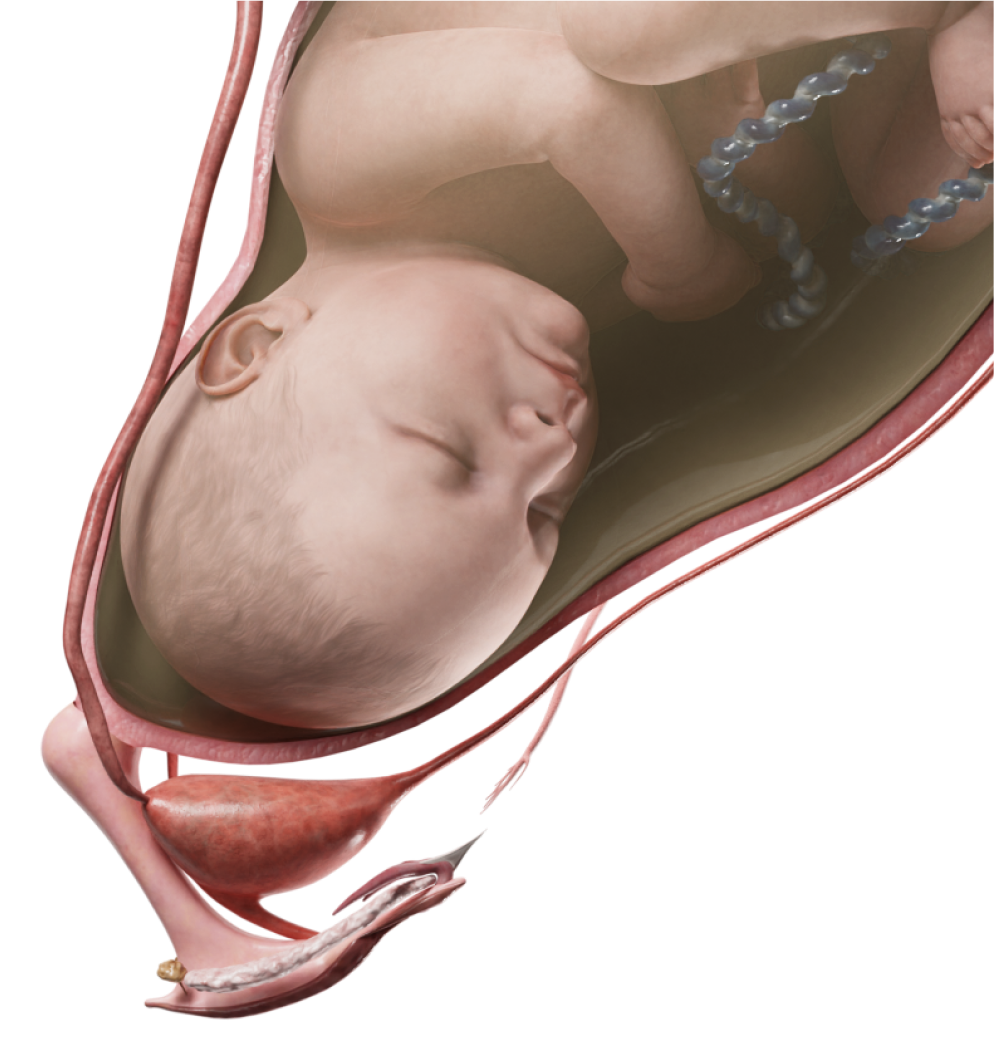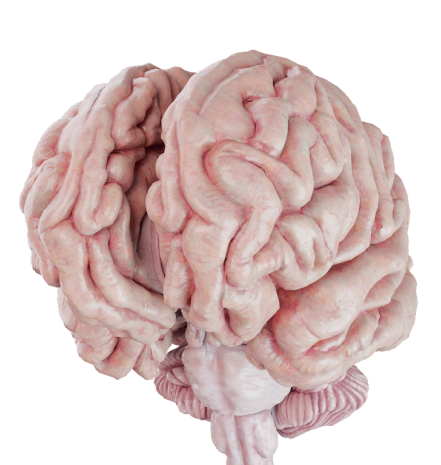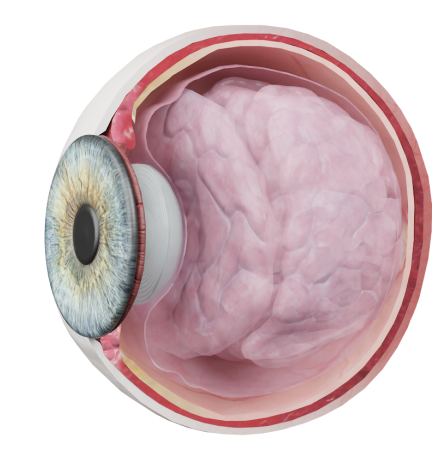Diseases of nasopharynx
Adenoid hypertrophy, also known as enlarged adenoids, is an abnormal growth of the nasopharyngeal tonsil (adenoid). The incidence of this condition is higher in children compared to other age groups.
Tubal tonsil hypertrophy, or hypertrophy of the torus tubarius, is a pathological enlargement of the lymphoid tissue of the tubal tonsils that are very close to the torus tubarius. The latter is a mucosal elevation in the nasopharynx formed by the pharyngeal end of the auditory (Eustachian) tube.
Adenoiditis is an inflammation of the nasopharyngeal tonsil.
Classification
- Adenoid hypertrophy:
- Grade I hypertrophy;
- Grade II hypertrophy;
- Grade III hypertrophy.
2. Hypertrophy of torus tubarius.
3. Adenoiditis:
- acute;
- chronic.
Etiology
The onset of adenoid hypertrophy is usually observed in early childhood (around the age of 3) and persists until puberty, when tonsillar tissue starts to gradually involute. This process continues until approximately the age of 20, when the nasopharyngeal tonsil reduces to a small structure. In rare cases, tonsillar enlargement may occur in younger children and persist into adulthood.
Adenoid hypertrophy is a common pediatric disorder, with an incidence of ~35.0 per 1000 children. More than half of pediatric patient visits to an otolaryngologist are associated with this problem. Tubal tonsil hypertrophy is also typical for preschool children, but this condition is quite rare. The etiology of these disorders is similar, since both nasopharyngeal and tubal tonsils are masses of lymphoid tissue located in the nasopharynx. The most common cause is an infection, when exposure to foreign antigens (bacteria, viruses, fungi, etc.) triggers an immune response in the tonsils. However, due to the immaturity of the lymphoid tissue in children and a lack of antibodies, lymphocytes are produced excessively to compensate for their functional insufficiency. This leads to an active proliferation of the tonsillar lymphoid tissue, resulting in hypertrophy. Subsequently, as the immune system matures, the tonsils gradually decrease in size. Other predisposing factors for adenoid and tubal tonsil enlargement include indoor and food allergens and gastroesophageal reflux (GER). The latter is associated with the irritating effects that hydrochloric acid has on the nasopharynx tissues. In addition, according to some studies, parental smoking and genetic predisposition are also among the risk factors for adenoid hypertrophy.
Adenoiditis is typically caused by a viral or bacterial infection. Respiratory syncytial virus (RSV), adenovirus, influenza and parainfluenza viruses, as well as herpes viruses (including the Epstein — Barr virus) belong to the most common viral pathogens.
Bacterial adenoiditis, in turn, is primarily associated with streptococci (S. pneumoniae and S. pyogenes), staphylococci (S. aureus and S. epidermidis), Pseudomonas aeruginosa, and Moraxella catarrhalis. Opportunistic microorganisms that do not typically cause diseases in healthy individuals but can act as pathogens under the proper circumstances also play an important role. Predisposing factors for adenoiditis include concomitant pathologies such as recurrent or chronic diseases of the upper respiratory tract (rhinitis, sinusitis, bronchitis, etc.), GER, endocrine disorders (diabetes mellitus and thyroid diseases), immunodeficiency (HIV infection), and allergies. All of these conditions can significantly exacerbate and prolong the course of the primary disease. Moreover, it is believed that children who were not breastfed and have vitamin D deficiency have a greater risk of a long-term and complicated disease. It is worth noting that negative environmental factors, including dry air, inadequate temperature conditions, cluttered spaces, and work in hazardous working environments, affect the upper respiratory tract and, therefore, can aggravate the clinical manifestations of adenoiditis.
Anatomic Pathology
The nasopharyngeal tonsil is located in the roof (superior vault) of the nasopharynx. It is a lumpy, elastic, heterogeneous, pink mass of lymphoid tissue with longitudinal grooves of various sizes. It is approximately 5–7 mm in thickness and 20–25 mm in diameter. Adenoid hypertrophy is classified according to the size of the tonsil and the degree of nasopharyngeal obstruction:
- Grade I hypertrophy: enlarged adenoids are located in the superior part of the nasopharynx and cover 1/3 of the vomer;
- Grade II hypertrophy: enlarged adenoids occupy 1/2 of the nasopharynx and cover 1/2 of the vomer;
- Grade III hypertrophy: enlarged adenoids almost completely obstruct the nasopharynx and cover the vomer; they also descend into the oropharynx.
Tubal tonsils are small (up to 7 mm) collections of lymphoid tissue located near the pharyngeal opening of the auditory tube (cranially). When they enlarge, the opening becomes blocked, obstructing the pharyngeal end of the Eustachian tube.
Inflammation of the nasopharyngeal tonsil is characterized by a disruption of their barrier function. The ciliated epithelium gets damaged, and the adenoid vegetations become hyperemic, infiltrated, and covered with fibrinous deposits. In addition, a large amount of serous or mucopurulent matter accumulates in the tonsillar grooves. Patients often complain of mucus dripping down the back of the throat (postnasal drip). On examination, lymphoid follicles are enlarged, and hyperemia of the palatopharyngeal arches and the lateral wall of the pharynx is observed. Based on the exudate character, adenoiditis can be subdivided into catarrhal, exudative (serous), and mucopurulent.
Clinical Manifestations
Adenoid hypertrophy is associated with a variety of symptoms. The most common problem that prompts parents to seek medical help is their child's snoring, noisy breathing, and constant nasal breathing difficulties. In the latter case, infants and young children may even experience problems while eating. A significant tonsillar enlargement can also affect a child's speech, resulting in a nasal voice. Poor sleep quality and frequent nighttime awakenings are also typical, leading to fatigue and reduced concentration during the day. Some of the patients suffer from obstructive sleep apnea (OSA), which is characterized by lapses in breathing lasting up to 1 minute during sleep. Notably, there is a specific term to describe the characteristic facial appearance of children with adenoid hypertrophy — "adenoid facies" (English for Habitus adenoideus). It is characterized by a long face with a half-open mouth, a flattened nasal bridge, malocclusion (mandibular prognathism), protruding upper incisors, a high-arched palate, and mild exophthalmos.
Clinical manifestations of tubal tonsil hypertrophy are not as prominent as those of adenoid enlargement. However, this condition affects the airways indirectly due to the occlusion of the auditory tube.
Enlargement of both adenoid and tubal tonsils can block the pharyngeal opening of the auditory tube, leading to Eustachian tube dysfunction, recurrent acute otitis media, or indolent otitis media with effusion. This can occasionally result in conductive hearing loss, which might be the only complaint from a patient.
Adenoiditis is usually classified according to the duration of symptoms and may be acute (up to 7–10 days), subacute (from 10 days up to 1 month), and chronic (over 1 month). However, in clinical practice, this division is quite formal. Since adenoiditis results in lymphoid tissue swelling, its clinical manifestations are similar to those of adenoid hypertrophy. In addition to all the symptoms listed above, mucous or purulent nasal discharge, postnasal drip, and cough are observed. Please note that these symptoms tend to worsen at night. Fever, general intoxication, headache, and pain inside the nose that radiates to the eyes and ears are typical for acute adenoiditis. Additionally, regional lymph nodes become enlarged and tender. Chronic adenoiditis, in turn, is characterized by a low-grade fever, a severe nighttime cough, and a secondary middle ear pathology that is usually accompanied by conductive hearing impairment.
Diagnosis
A detailed medical history and a thorough ENT examination (otorhinolaryngoscopy) are the initial steps to diagnose nasopharynx diseases. Further, posterior rhinoscopy and nasopharynx endoscopy are performed to determine the degree of the nasopharynx obstruction and to assess the pharyngeal end of the auditory tube. A digital (finger) examination is no longer relevant and is extremely rare. Additional diagnostic options include a lateral view X-ray of the nasopharynx, which can help determine the severity of adenoid vegetation hypertrophy. To identify the causative pathogen of adenoiditis and its antimicrobial susceptibility, a microbiological culture is performed.
Treatment
At the initial stages, treatment for adenoid and tubal tonsil hypertrophy in children is primarily conservative. It includes nasal corticosteroids (mometasone furoate) for at least 1 month with a follow-up to evaluate its effectiveness. If the results are satisfactory, it is advised to continue using the drug according to the appropriate regimen. Surgical treatment should be considered if pharmacotherapy proves ineffective and any complications are observed. These may include OSA, hearing loss, and chronic otitis media. The most common type of surgery is adenotomy, when hypertrophied lymphoid tissue is excised using a Beckmann adenoid curette. This procedure can be done under local or general anesthesia.
Enlarged adenoids in adults must be surgically removed, followed by a histopathological examination of all excised tissues.
In cases of tubal tonsil hypertrophy, preference should be given to conservative therapy with topical steroids. Surgical excision is not an option since it usually results in scarring of the pharyngeal end of the auditory tube. Balloon dilation of the Eustachian tube is the only procedure available if the auditory tube dysfunction is severe and middle ear effusion accompanied by hearing impairment is observed.
Antibiotics are crucial to treat adenoiditis. They can be administered either topically (in a spray form) or systemically, taking into account the antimicrobial susceptibility of a pathogen. It is also recommended for patients to clean their noses and nasopharynx with saline or seawater solutions on a regular basis to flush out pathogens or other debris. In addition, vasoconstrictor nasal sprays can be used to relieve swelling. In order to improve overall health and boost immunity, it is important to maintain a healthy lifestyle. Surgery should be considered in cases of recurrent adenoiditis or middle ear complications.










